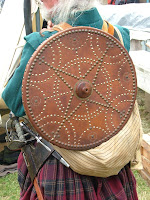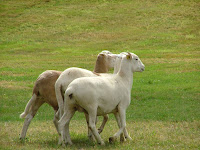
Myths are often considered an aspect of folklore. Even so, mythology might include the belief in the supernatural, where as folklore and folk tales derived when people had the need to explain mysterious events. Pre-Christianity might have had a hand in old world myths and folklore. A people’s yearning to believe in the hereafter, or in some type of entity, lived on through stories passed generation to generation. Once Christianity became widespread, faeries, brownies, and even the belief in the Loch Ness monster faded away.
With a rich Celtic History going back over 2,000 years, it is not surprising that Scotland has an extensive heritage of myths and folklore. Many objects have accumulated their share of myths and legends; circles of stones, cairns, and even castles.
Some believe that religion was an adaption from stories and memoires or evolutionary biology. In other words, religion evolved as byproduct of psychological mechanisms that evolved for other reasons. These mechanisms might have told early people how to watch for things that could cause them harm (omens). This morphed into an ability to come up with causal narratives for natural events (folk tales) while other people had minds of their own with their own beliefs, desires and intentions (mythology and the precursors of organized religion).

Some scholars concluded that unexplained observations like thunder or lightning were the basis of stories. These word-of-mouth explanations changed with the frequency of their telling which is why one myth could have many different descriptions or endings. Even the distinctive features of Scotland’s varied scenery fuels these beliefs. Deep mountain lochs, creeks, mountain peaks, and the moor, reflect in their folk tales and myths.
Scotland and Ireland share some basic land similarities. In Scotland, mythical Selkies are shy marine creatures in the shape of a seal, usually found near the islands of Orkney and Shetland. A female can shed her skin and come ashore as a beautiful woman. If found, a man could force her to be his wife. Of course, as the legend goes, if she recovered the skin, off she’d go. Male Selkies are said to be responsible for storms. What better explanation for the sinking of a ship?
Selkies of Irish lore are said to come from Co. Donegal in Ireland, which happens to be where many people made their living from the sea. Living by the sea might cause people to craft stories as a way to explain its mysteries. The Irish considered the Selkies to have the same characteristics as those of Scotland, even though they considered other sea creatures more malevolent. Most scholars believe the seals and sea lions from which these myths evolved had sweet, non-threatening dispositions. This might have allowed them to easily be transformed by myth into non-threatening Selkies. At least, the females!
Religion changed everything. Popular Christian beliefs were the norm. Myths and folklore slipped to the back burner, but never disappeared. Many tales are quite popular today. Think of the legend surrounding the Blarney Stone in Ireland or the Loch Ness Monster. Even Girl Scout troops around the world call their youngest recruits ‘Brownies’ after helpful creatures that do good deeds.

Myths and folk tales live on because people need to believe in them. There are hundreds of wonderful stories out there about kelpies, fairies, banshees, and the like. I recommend the following websites if you would like a taste. You might even recognize one or two stories!
www.compassrose.org/folklore/scottish/Scottish-Folktales.html
http://www.sacred-texts.com/
Interested in reading my take on dead witches, a heroine with the secret gift of premonitions and a hero cursed to turn into a dragon at inopportune times?

Check out my book DRAGON'S CURSE by Whispers Publishing & Amazon for Kindle. Learn more by visiting my website: www.nancyleebadger.com and my blog: www.RescuingRomance.nancyleebadger.com






